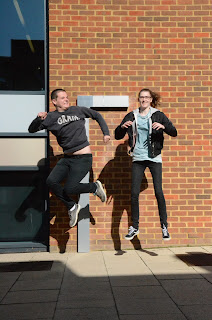What is vernacular Photography?
It is photos of everday life and objects.
One may not realise but everyone takes vernacular photographs. Especially in this modern age of smart phones. Photos that one takes with friends or photos taken on a holiday are vernacular photographs.
August Sander was one of the first photographers of vernacular photography. He took photos of people living their lives in Germany. This work was known as Citizens of the 20th Century. His aim was to not stage photos but instead to show their real life.


Martin Parr used vernacular photography to show the lives of people in Britain.

Below are some of my photos which I took on holiday and are considered vernacular photography.
 I took this photo of my friend and a police officer on Brooklyn bridge
I took this photo of my friend and a police officer on Brooklyn bridgeThis photo was taken on the subway and shows the everyday life of commuting passengers.
 This is one my favourite photographs that I have taken. I happened to be walking past as this couple was doing their wedding shoot, I managed to capture them as they were on the zebra crossing.
This is one my favourite photographs that I have taken. I happened to be walking past as this couple was doing their wedding shoot, I managed to capture them as they were on the zebra crossing.





























